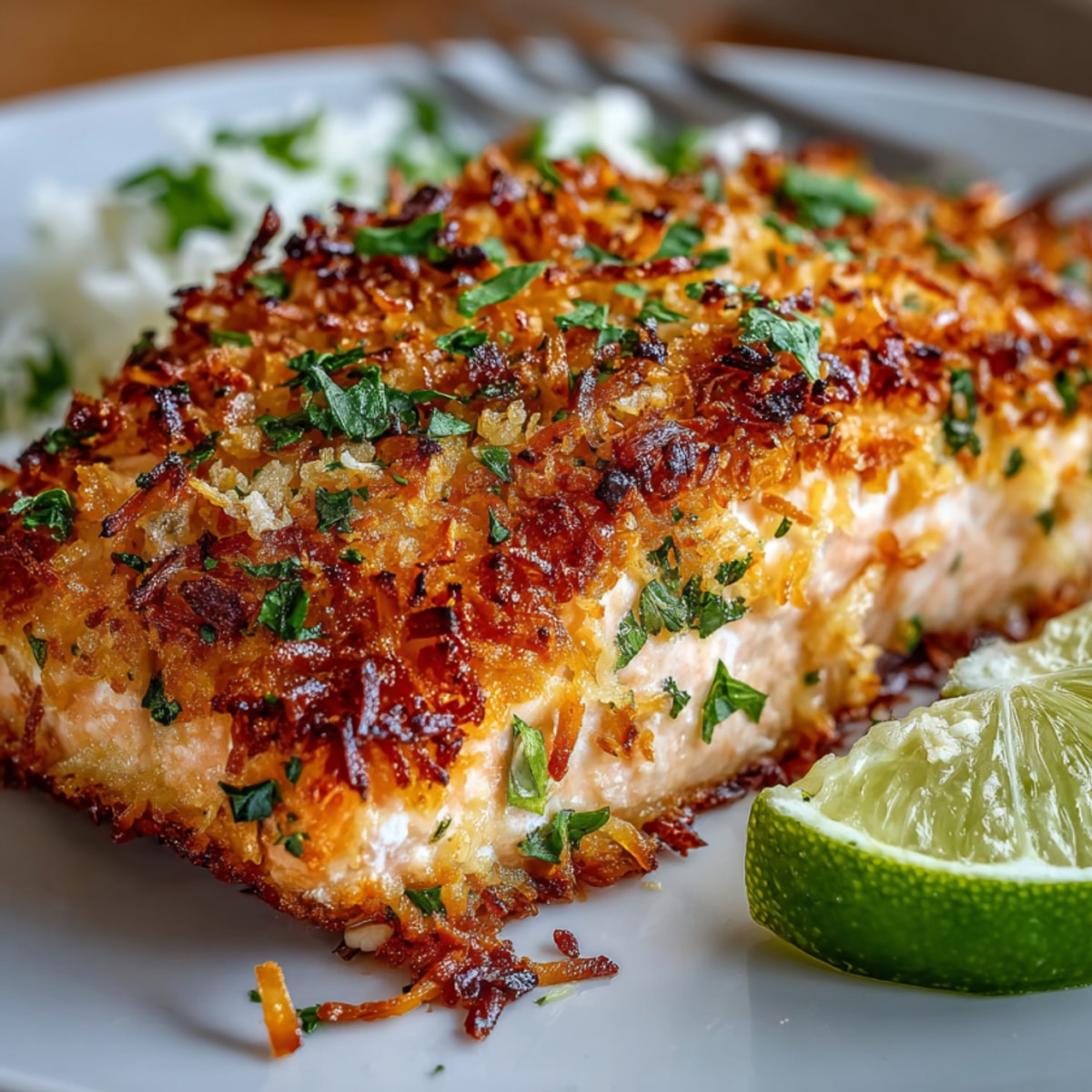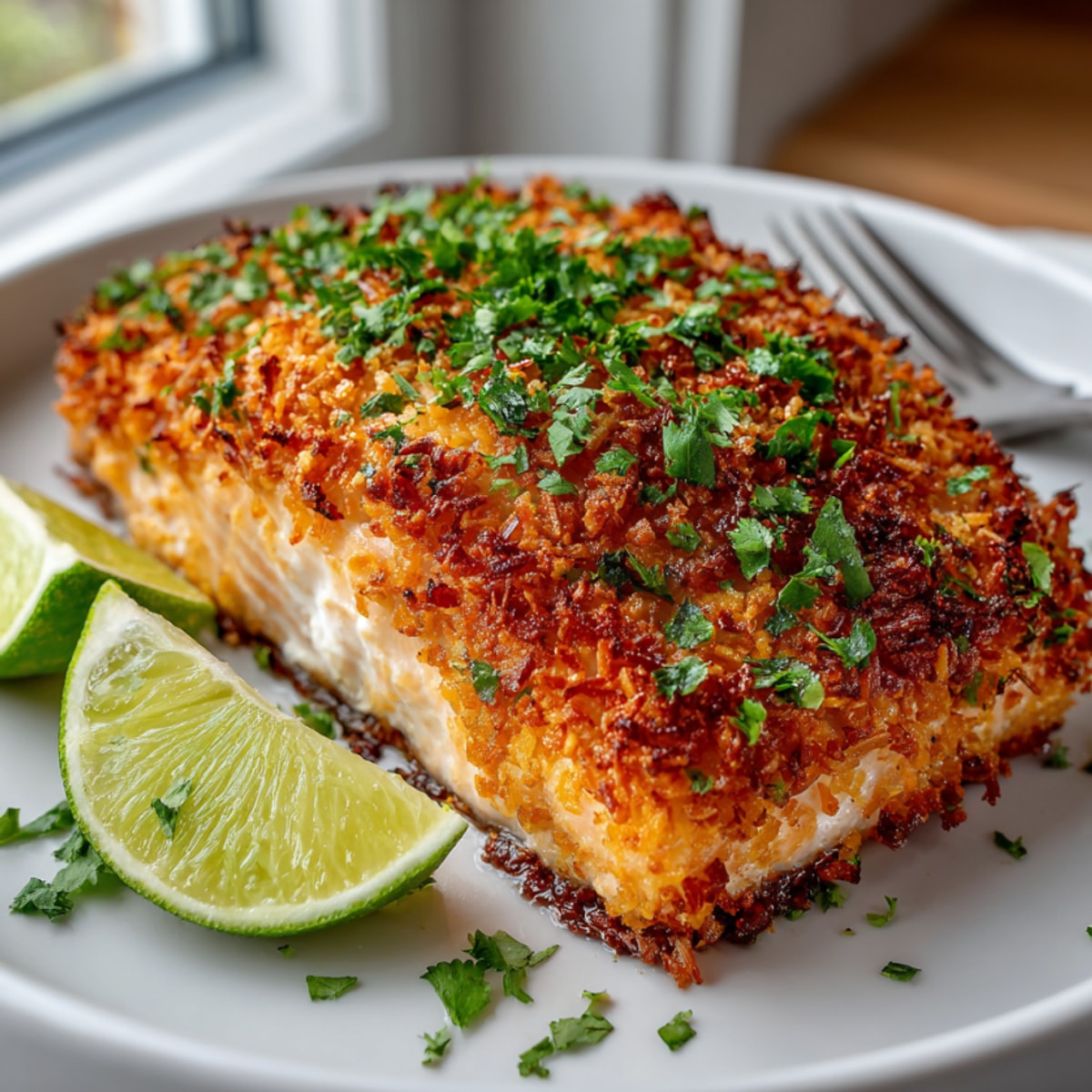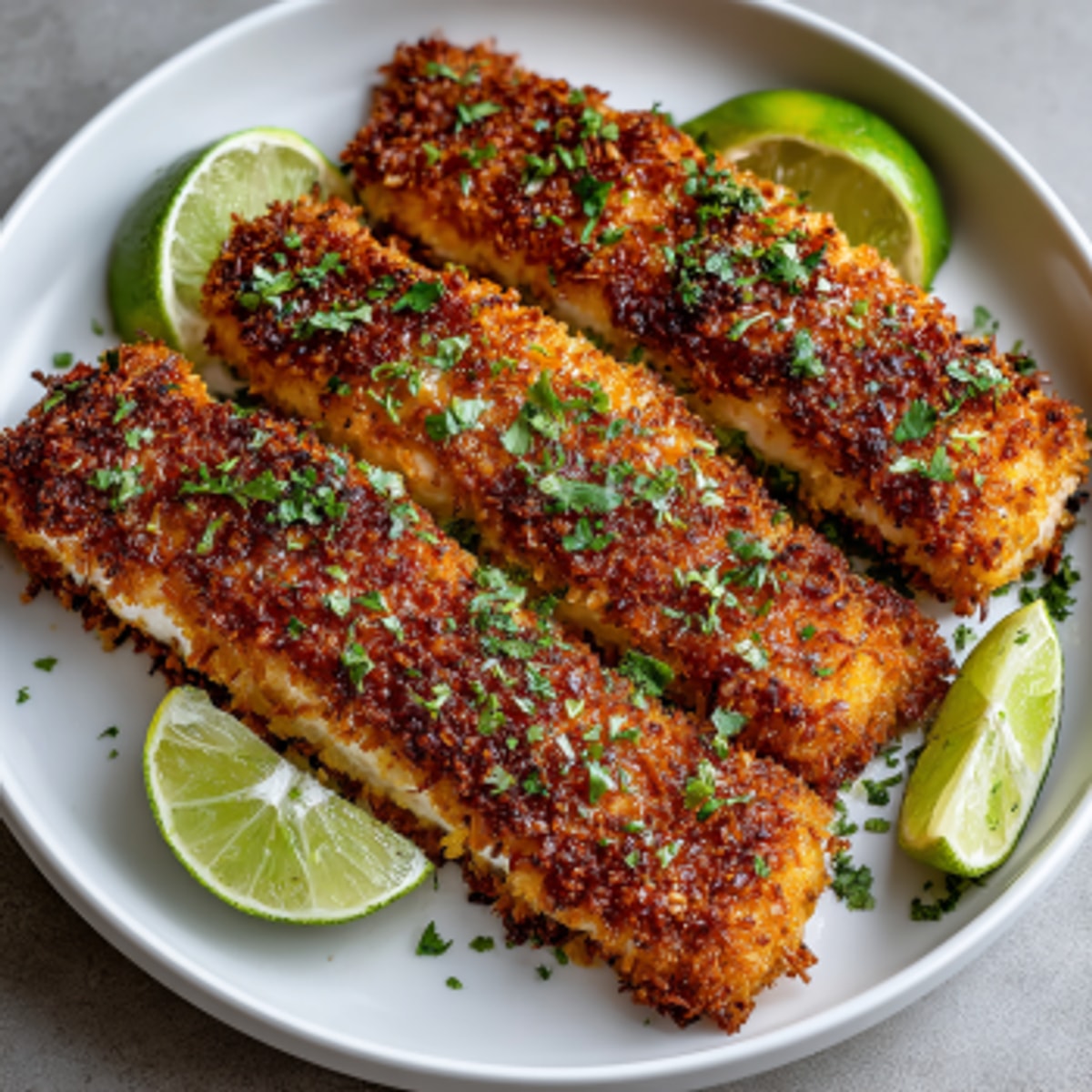 Save
Save This hearty coconut crusted salmon has been my go-to recipe for impressive yet easy dinners for years. The combination of flaky salmon with a crispy, tropical coconut crust creates a restaurant-worthy dish that feels indulgent while being surprisingly simple to prepare at home.
I first discovered this recipe when trying to recreate a dish I had at a tropical resort. After several attempts to get the perfect crust that stayed put and didn't burn, this version became my family's favorite special dinner that even my seafood-hesitant children request regularly.
Ingredients
- Four salmon fillets approximately 6 ounces each: Look for fresh wild-caught salmon when possible for the best flavor and texture
- Salt and black pepper to season the fish perfectly before coating:
- All-purpose flour creates the first layer that helps everything else stick to the salmon:
- Large eggs provide the moisture that binds the coating to the fish:
- Unsweetened shredded coconut offers that signature tropical flavor without being overly sweet:
- Panko breadcrumbs add extra crispiness that regular breadcrumbs simply cannot match:
- Coconut oil enhances the tropical flavor profile but vegetable oil works well too:
- Lime wedges for serving add brightness that cuts through the richness:
- Fresh cilantro optional but highly recommended for a pop of color and fresh flavor:
Instructions
- Prepare the salmon:
- Pat your salmon fillets completely dry with paper towels. This crucial step ensures the coating adheres properly. Season both sides evenly with salt and black pepper, being sure to season a bit more generously than you might think necessary as some seasoning will be lost during cooking.
- Set up your dredging station:
- Arrange three shallow bowls in a row for an efficient workflow. In the first bowl, add your flour. In the second bowl, thoroughly whisk the eggs with water until completely combined. In the third bowl, mix the shredded coconut and panko breadcrumbs until evenly distributed.
- Coat the salmon:
- Working with one piece at a time, dredge the salmon in flour and shake off any excess. The flour should create a thin, even layer. Next, dip into the egg mixture, allowing excess to drip off. Finally, press firmly into the coconut mixture on all sides. Use your fingers to press the coating onto the salmon ensuring complete coverage.
- Cook to golden perfection:
- Heat your coconut oil in a large nonstick skillet over medium heat until shimmering but not smoking. Place the salmon crust-side down first and cook undisturbed for 3 to 4 minutes until the crust turns a beautiful golden brown.
- Flip and finish cooking:
- Using a thin spatula, carefully flip each fillet to avoid dislodging the crust. Cook for another 3 to 5 minutes depending on thickness until the salmon flakes easily with a fork but still remains moist in the center. The internal temperature should reach 145°F for perfect doneness.
- Serve immediately:
- Transfer to plates while still hot. Garnish with lime wedges and sprinkle with fresh chopped cilantro for a burst of color and complementary flavor.
 Save
Save My absolute favorite ingredient in this recipe is the unsweetened shredded coconut. I once accidentally used sweetened coconut and while still delicious, it created an entirely different dish with a dessert-like quality. The unsweetened variety allows the natural sweetness of the salmon to shine through while adding that distinctive tropical flavor that makes this dish so special.
Storage and Reheating
This coconut crusted salmon is best enjoyed immediately after cooking when the crust is at its crispiest. However, leftovers can be stored in an airtight container in the refrigerator for up to 2 days. To reheat, place on a baking sheet in a 300°F oven for about 10 minutes. Avoid microwaving as this will make the once-crispy crust soggy. I actually enjoy leftover salmon cold on top of a salad for lunch the next day, which preserves more of the texture than reheating.
Perfect Pairings
The tropical flavors of coconut crusted salmon pair beautifully with sides that complement its unique profile. Jasmine rice makes an excellent bed for the salmon, soaking up any bits of crust that fall off. For a complete meal, serve with a fresh mango salsa which echoes the tropical theme while adding brightness and acidity. A simple side of steamed vegetables like asparagus or sugar snap peas provides a clean counterpoint to the richness of the fish. For a special occasion, start the meal with a light coconut soup to create a cohesive theme throughout your dinner.
Ingredient Substitutions
No panko breadcrumbs? Regular breadcrumbs will work in a pinch though the crust won't be quite as crispy.
For gluten-free diets substitute the all-purpose flour with rice flour or a gluten-free blend.
Swap the panko for crushed rice cereal or gluten-free breadcrumbs.
Out of coconut oil? Any neutral cooking oil like canola or vegetable oil works fine.
Salmon can be replaced with another firm white fish like halibut or mahi-mahi for a different but equally delicious variation.
Seasonal Adaptations
Summer version Serve with a fresh pineapple salsa and grilled vegetables for a perfect warm weather meal
Fall adaptation Add warming spices like a pinch of cinnamon to the coconut mixture and serve with roasted root vegetables
Winter comfort Pair with a coconut curry sauce and serve over rice for a cozy cold weather dinner
 Save
Save Test by sprinkling a few breadcrumbs in the pan – they should sizzle immediately but not instantly brown.
Recipe FAQ
- → How do you ensure the coconut crust stays crispy?
Make sure to pat the salmon completely dry and press firmly into the coconut-panko mixture before pan-searing. Use medium heat for a golden crust.
- → Can this dish be made gluten-free?
Yes, simply substitute all-purpose flour and panko breadcrumbs with gluten-free alternatives for a similar result.
- → What pairs well with coconut crusted salmon?
Jasmine rice, mango salsa, or a simple green salad offer refreshing sides that complement the tropical notes.
- → Can I bake instead of fry the salmon?
Yes, place coated fillets on a lined baking sheet and bake at 400°F (200°C) for 12–15 minutes until the crust is golden and salmon flakes easily.
- → Is coconut considered a tree nut allergen?
Coconut is a fruit, but those with tree nut allergies should consult a doctor before consuming. Always check labels for potential allergens.